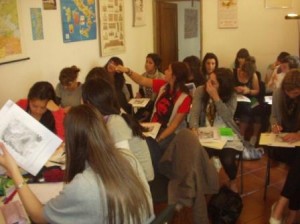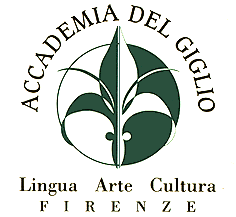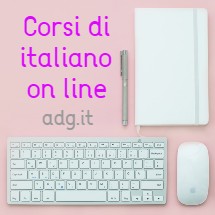 This programme will start next January at AdG and it will combine Italian Language studies, Fine Arts studies, Art History:
This programme will start next January at AdG and it will combine Italian Language studies, Fine Arts studies, Art History:
ITALIAN LANGUAGE CLASSES
From beginner to advanced, according to the European Language Portfolio.
24 weeks, 2 hours a day, in the morning, from 9am to 11am, Monday – Friday
Total number of hours: 240
Our foreign language training is offered at all levels. We will assign your course after a brief placement test that you will take upon arrival. Please note that 7 language levels ranging from beginner to advanced are available and regular progress tests are held at the end of each level. All participants attend a minimum of 80 class hours per 4-week period through a combination of small group, conversation and grammar classes.
The programme
After attending the Italian Language course the student will acquire the following language abilities:
· Understand a wide range of demanding, longer texts, and recognise implicit meaning;
· Express him/herself fluently and spontaneously without much obvious searching for expressions;
· Use language flexibly and effectively for social, academic and professional purposes.
· Produce clear, well-structured, detailed text on complex subjects, showing controlled use of organisational patterns, connectors and cohesive devices.
From the European Language Portfolio
DRAWING AND PAINTING CLASSES
Classical Drawing techniques, Life drawing and Portrait, Water colour, Acrylic and Oil Techniques.
24 weeks, 3 hours and a half a day, in the afternoon, from 1.45pm to 5.15pm, Monday – Thursday
Total number of hours: 336 hours
Our Art programme is offered according to your artistic skills and school experience. Therefore, if you are not an Art novice, on your first day of class please bring with you some pictures of your previous works (even on a CD). Our Art teacher will evaluate them and will discuss with you about your goals and main interests in Art techniques. Also please note that all participants will attend a minimum of 56 class hours per 4-week period through a combination of mainly drawing and painting classes.
The programme and the techniques
The first 12 weeks introduce basic drawing (proportions, shading and perspective) and various painting techniques (especially acrylics and watercolour) while the following 12 weeks aim at developing and improving students artistic skills. At the end of these six months students will have acquired the basic knowledge required towards the making of their personal portfolios and will concentrate on the study of one specific technique, such as:
Portrait: Through making rapid strokes in pencil (or charcoal) students will learn how to portray the essential features of a human face, and through more elaborate drawings they will focus on details, on the effect of light and shade (“the chiaroscuro”), as well as on the psychological value of facial expression.
Oil paint gives a “richness” and depth of colour that stresses on the shading and the highlighting. At the end of the semester Students will have learnt to emphasise or fade the brightness of the colours of different objects and the effects of light on metal, glass and bodies.
Egg tempera paint is made from finely ground dry pigments, egg yolk and water. Students will learn to master this fast drying medium that is fluid by nature and must be applied thinly in semi-opaque and transparent layers. They will realize how different this linear style is from the thick, brushy and painterly technique of oil painting. They will also appreciate the subtle colour variations so characteristic of egg tempera painting (unlike the deep saturated colours typical in oil paints).
Fresco is one of the oldest painting techniques. It was invented by the Egyptians who later taught it to the Greeks. But it was only in the 14th century, thanks to the Italian painter Giotto, that the fresco technique gained more and more importance among the Fine Arts.
The most peculiar quality of fresco painting lies undoubtedly in its making: the pigment – a natural material – is laid on a fresh plaster several times in a short lapse of time, and through a cohesion process it fixes itself in the plaster, creating warm and subtle tones. The artist can make no mistakes, as correcting them would imply destroying the whole work. That is why the fresco technique is particularly difficult to learn and master.
SEMINARS ON ART HISTORY
“From Giotto to Mannerism” and “The Renaissance in Florence and Italy”.
2 weeks,
Total number of hours: 16
The programme
This course introduces and explores the main historical-artistic trends from XIV to XVI centuries. Lessons are complemented by guided tours to museums and monuments in Florence. The time-table includes two weekly one-hour lessons and two weekly two-hour guided tours. At the end of the four weeks students will have visited the Uffizi, the Bargello National Museum, the National Academy Gallery, the Medici Chapels, the San Marco Museum.
For more infos please contact adg.assistance@gmail.com or visit our website







Commenti recenti